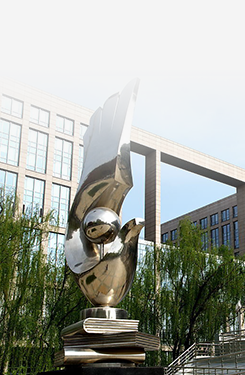Topic: Communicating with Only Two Vehicles Immediately Ahead Boosts Traffic Capacity Sixfold in Connected Autonomous Vehicle Platoons
Time: 10:00 AM —12:00 AM, Thursday, April 10, 2025
Location: Room A1028, New Main Building
Guest: Prof. Jiang Rui, Beijing Jiaotong University
Abstract:
Due to the continuous inflow of new vehicles far outweighing the outflow of scrapped vehicles, urban areas are experiencing severe traffic congestion resulting from the surging number of vehicles. Addressing urban congestion through enhanced traffic capacity has emerged as a critical objective for connected autonomous driving technologies. An irredundant communication connectivity topology is essential for ensuring the high efficiency and stability of the traffic system, which has not been fully validated, due to the scarcity of real-world tests. Motivated by this fact, this paper deploys a connected autonomous vehicle (CAV) platoon without relying on the information of a platoon leader to preserve the possibility of extending the platoon in future practical applications. The study is supported by both real-world CAV experiments and simulations in a connected autonomous driving environment, where the following CAVs communicate with the two vehicles immediately ahead. The simulation extends the experimental results to four typical scenarios: long platoon formation, on-ramp, a two-lane highway with multiple consecutive on-/off-ramps, and a four-lane urban road with multiple consecutive signalized intersections. The results demonstrate that such a communication structure significantly enhances traffic capacity and stability, highlighting the effectiveness of CAVs in managing complex traffic environments. Additionally, the study underscores the challenges posed by the simulation-to-reality gap. Finally, it suggests that pursuing a zero-time gap for stable traffic conditions may impose substantial communication costs, as the optimal time gap setting and the number of communication vehicles follow an inverse linear relationship on a log-log scale plot. This work gains valuable insights into the sixfold traffic capacity improvement with communicating only two vehicles ahead from a theoretical perspective and the practicality of such a communication connectivity topology from real-world experimental validation.

